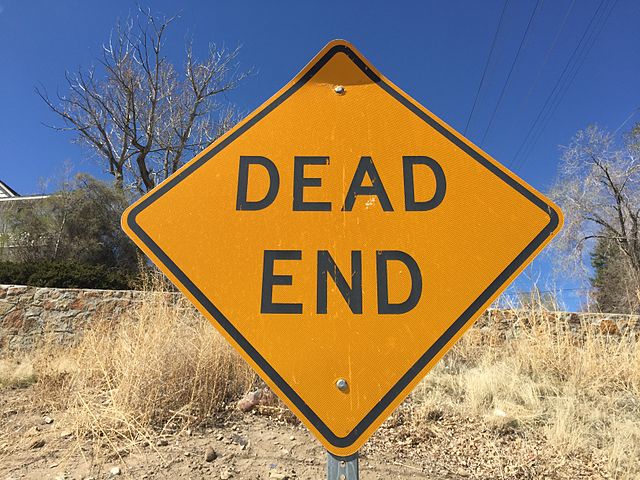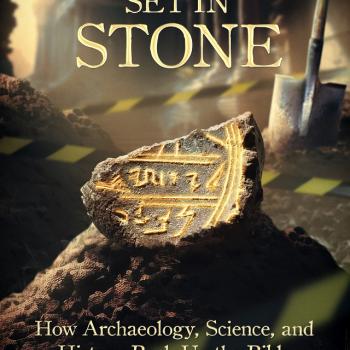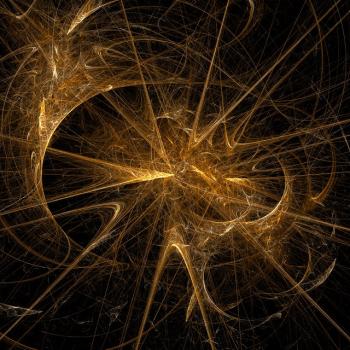
Dead End sign at an interruption in 3rd Street in Elko, Nevada. Photo by “Famartin” (3-25-15) [Wikimedia Commons / Creative Commons Attribution-Share Alike 4.0 International license]
*****
(10-29-06)
[Fr. O’Leary’s words will be in blue]
*****
I don’t spend much time refuting Catholic liberalism because, frankly, I don’t think it deserves the dignity of a reply, as it is fundamentally wrongheaded and intellectually dishonest, and tries to pretend that the Catholic faith is something that it clearly is not. Nevertheless, as a Catholic apologist, I can’t totally ignore it, much as I would like to (as with anti-Catholic Protestantism and Catholic “traditionalism” – concerning which I have very similar feelings). And so I have a web page devoted to it and roughly half of one of my completed book-manuscripts.
If you want to see encapsulated in one person all of the standard, typical, droningly and cloningly predictable characteristics of this tragically mistaken mindset, you could do no better than Fr. Joseph O’Leary. I have written about him once before. Recently, I came in contact with him on the Against the Grain blog, talking about the issue of the intrinsic immorality of torture.
By this reasoning [my own, that he cited], any evils the Church has blessed – for instance the massacre of Protestants in 1572 and the judicial murder of natives in India, the Philippines and Latin America under the Inquisition – are rendered innocent and we are free to commit them ourselves. Confinement of Jews to ghettos, forcing them to hear sermons on their blindness, and to wear a distinctive costume, would be a moral practice according to David Armstrong. Neocaths are poisoning our religion at its source and turning it into a form of Talibanism – torture and all.
Isn’t that wonderfully tolerant and charitable? That’s odd, since we all know (from endless self-trumpeting) that liberals are the most tolerant, winsome, unassuming people around, and far more tolerant than we wicked conservatives or (Fr. O’Leary’s preferred term) “NeoCaths.”
Here are further exchanges with Fr. O’Leary. Note how this man thinks and argues, and the falsity of his presuppositions. This is the ragged, pathetic face of liberal dissent. If we don’t understand how wrong and misguided such heterodoxy is, we may be taken in by it.
* * * * *
Your hermeneutics of forcing Catholic morality into the dimensions set by the past could lead to a rehabilitation of slavery, persecution of Protestants and Jews, etc.
Not at all, as stated. Nothing could be further from the truth. I’m as committed to religious liberty and tolerance as anyone on earth, including you. My goal is simply to understand the Inquisition within its historical context, and to understand the reasoning behind it, not to extol its virtues, or bring it back today. Furthermore, I live out my view on tolerance by trying to treat anyone I dialogue with respect (including atheists and those who despise me as an apostate, etc.).
I may vigorously argue my point, and utilize sarcasm and satire if it is appropriate (as Cardinal Newman did, and also St. Paul and Jesus), but I don’t accuse opponents of nefarious motives sinply because they take a different view than I do. This all flows from my intense commitment to ecumenism and mutually-respectful dialogue, which in turn is a result of a certain approach to religious tolerance.
* * *
“When news of the St Bartholomew’s day Massacre… reached Rome, [Gregory XIII] celebrated it with a Te Deum and thanksgiving services as a victory for the church over infidelity as well as the defeat of political treachery; and he actively subsidized the Catholic League against the Huguenots. When his dreams of an Irish invasion of England collapsed (1578 and 1579), he gave his personal support to plots to have the queen assassinated.” Kelly, Oxford Dictionary of Popes.
I don’t know if all this is true or not. This is a Protestant work by a pretty good Anglican historian (J.N.D. Kelly) but one, it should be noted, with a pronounced bias against the papacy. It should be understood accordingly.
(10-26-06)
A Te Deum was sung in Rome after the [St. Bartholomew’s Day] massacre, if I remember correctly.
That is correct, but the question is, “what was it sung for? According to Catholic historian Warren Carroll:
Pope Gregory XIII ordered a Te Deum said in thanksgiving for the deliverance of the French royal family and Christendom from Coligny’s alleged plot to murder the king, seize the crown, support the rebels in the Low Countries, and march on Rome.
However, the Pope was horrified by the cruelties of the massacre, sheeding tears and saying, “I am weeping for the conduct of the king [Charles IX], which is unlawful and forbidden by God.” Spanish ambassador Zuniga described him as “struck with horror” at the details of the massacre. Later the Pope said he wept for the many innocent dead, and refused to receive the assassin Maurevert in audience.
(The Cleaving of Christendom, Front Royal, VA: Christendom Press, 2000, 370).
But Carroll also notes that a procession of thanksgiving took place in Rome and that the pope “celebrated the event in a special bull, though it was worded to praise only the execution of the leaders, not the slaughter of the two thousand.” (Ibid., 370-371)
As usual, the truth of the matter is both more complex and interesting than the myth.
(10-26-06)
* * *
Note that Fr. O’Leary’s remarks must be understood within the total backdrop of his extreme, antiquated 60s-style theological ultra-liberalism. Here is a sampling from just one article of his:
The Decline of the NeoCaths.
Americans are hungry to torture Islamic bodies, though each tortured body causes a thousand new “terrorists” to spring up. Neocath priests are happy to pander to this bloodlust, much as Taliban mullahs no doubt whitewash the tactics of terrorism.
David Armstrong, lay “apologist” (for the Gospel?) writes: . . .
[then he rehashes the “textual criticism” that I have now replied to by removing unclear portions of my paper. You gotta love the “apologist” in quotes routine: used by critics of mine from all sides, as if I am not what I am, or that it is somehow an unsavory endeavor to do apologetics as a vocation]
* * *
Benedict XVI has indeed fulfilled the neocath dream in one respect: it now looks as if the entire Curia has devoted itself to the “inquisitorial” task of ensuring orthodoxy.
[heaven forbid! We can’t have popes engaging in such outrageous, “Byzantine” activities as that! What is the Catholic world coming to anyway?]
They have taken on a distinctly sectarian cast, regularly calling into question the legitimacy of Vatican II, and pouring scorn on other Christian denominations and other religions in a manner not only incompatible with Vatican II but with the entire ecumenical labor of the Church over the last eighty years or so. . . . Neocaths, who constantly attempt to undermine the authority of Vatican II.
* * *
The sterility of the neocath mindset is seen in the prodigious labors they devote to showing that official Catholic doctrine has never contradicted itself. See especially [Mike Liccione’s blog]. These extraordinary exercises, predicated on the alleged infallibility of Humanae Vitae, stand refuted by the clear facts of history, as found for instance in Charles Curran, ed. Changes in Official Catholic Moral Teachings, Paulist Press, 2003. Cardinal Dulles, favorite neocath theologian, carries this Parmenideanism so far as to maintain that the Church today, as in 1866, upholds the compatibility of slavery with divine and natural law.
The neocaths used to present themselves as responsible thinkers on sexual ethics. But increasingly it has become apparent that the most primitive homophobia, based far more on Sodom’n’Gomorrah biblical fundamentalism than on any responsible consideration of Catholic tradition, is the bottom line in their sexual thinking.
* * *
The leading neocath thinkers are converts from Anglicanism or Protestantism, who speak of their former denomination in tones borrowed, at their most charitable, from the quite out-dated polemic of Newman against Anglicanism; see especially [the Pontifications blog]. They bring to Roman Catholicism a testy, superior attitude, . . . They really feel it is their mission to save the Roman Church from the evil “Protestantizing” influence of Vatican II.
[Fr. O’Leary, of course, being an obvious paragon of tolerant virtue. I’m against Vatican II [???] – myself being one he lists as a “NeoCath” – , when I have always credited my friend John McAlpine for being the primary human influence on my conversion, precisely because he was following Vatican II’s ecumenical injunctions for sensible discourse with Protestants, in terms they can understand? Hmmm; very curious.]
* * *
A Church that recognizes the charisms of women and of gays is surely one that points to the future.
In contrast, the neocaths cling desperately to fetid relics of a half-imaginary past.
And in comments:
I urge the superiority of loving and faithful sexuality, which is why I back committed unions among gays over the promiscuity that is in practice valorized by the homophobic brigade. Recently it has been discovered that a huge percentage of hate crimes against gays are motivated uniquely by religious concerns. The neocaths have their share of blame to bear for this.
(10-26-06)
Chris Sullivan wrote:
Instead of ad-hominem attacks on Fr O’Leary “extreme, antiquated 60s-style theological ultra-liberalism” . . .
I concede that, technically, this is ad hominem, but note that it is perfectly acceptable and standard practice to highlight a person’s stated predispositions as a factor in how he approaches things.
Fr. O’Leary, after all, returns the favor. He calls me a “NeoCath” which is, as far as I am concerned, a rank insult. Not only that, he feels perfectly free to make asinine, absurd generalizations of this supposed class, as if, e.g., ones he wrongly classifies as “NeoCaths” make it their life’s mission to blast Vatican II. I’ve rarely seen a more ridiculous portrayal of my own position (and that’s saying something if you know the history of many folks who have criticized me).
I only call myself a Catholic, or (if it must be clarified) an “orthodox Catholic.” I don’t appreciate having self-serving polemical qualifiers attached to the label I am extremely proud to wear.
But in Fr. O’Leary’s case, he is clearly a theological liberal, or (if you will) a dissenter (however you protest against my flower-powery descriptions). Or do you deny this? And I think he would be proud to readily identify himself as such (or some equivalent high-sounding term, like “progressive”).
(10-26-06)
In fact there are no specific moral teachings of the Church that have been pronounced infallibly – if there were Humanae Vitae would be a prime candidate.
The Doctrine of Infallibility is actually saying that VERY, VERY RARELY can the Church claim infallibility. Even the doctrines of the Assumption and the Immaculate Conception may not meet the criteria for infallibility laid down by Vatican I.
[See Fr. O’Leary’s entire post from which these were drawn]
Etc., etc. This comes from a priest (God help us): Fr. O’Leary. I’m not gonna waste my time arguing with viciously circular liberal dissent of this sort.
Excuse me, but this is a smear. The vast majority of Catholic theologians hold that Humanae Vitae is not an infallible document. Very many theologians believe that Humanae Vitae is a mistake; . . .
[there are plenty of liberal theologians. ut they don’t ultimately determine Catholic doctrine and its authoritative interpretation. As to whether this document is infallible, see: The Ex Cathedra Status of the Encyclical Humanae Vitae, by Brian W. Harrison]
Theologians of the stature of Fergus Kerr OP have argued that the two Marian doctrines I mentioned do not meet Vatican I’s criteria of infallibility – for instance there was no fluctuatio in the minds of the faithful which the infallible decision was to resolve.
I’m interested (the vast majority of the time) in discussing matters with orthodox Catholics or those (including many Protestants) who take Catholic doctrine seriously and don’t transform it into Liberal Anglican Lite.
I’m content that Fr. O’Leary and I (despite his atrocious dissenting views and my orthodoxy) basically agree on the “torture” issue, and will leave it at that. One can’t have a discussion on Catholic doctrine when one party picks and chooses what he will from the body of infallible Catholic teaching.
I’d much rather have a discussion with an atheist. At least he doesn’t attempt to pretend that his own ostensible belief system is not what it is.
A = A. Fundamental to any logical, constructive discussion.
Catholicism = Catholicism, not a watered-down, insipid, grotesque version of Broad Anglicanism with more smells and bells and ecumenical councils that supposedly usher in the New Glorious Liberal Age.
Scoffing at ecumenical councils is a very very uncatholic thing to do.
Neocons and neocaths are the same breed, part of the same disease that is rotting the American soul.
The current American tragedy has been oiled by biblical fundamentalists and be magisterial fundamentalists . . .
(10-27-06)
And who has hurt Americans? Bush and his neocons, and their christianist dupes.
(10-27-06)
* * *
You are openly dissenting on crystal-clear Catholic dogma.
Untrue. I point out that (a) the two Marian dogmas of 1854 and 1950 in their definition may not meet the criteria of infallibility, according to some theologians; (b) that the Church has corrected its official moral teaching on many points and could well do so on the topic of Humanae Vitae; dissent from Humanae Vitae is not an issue concerning dogma and is very widespread in the Church – indeed, it is probably the majority position.
[the Catholic Church does not operate by majority vote. Elsewhere, Fr. O’Leary griped that the Vatican was difficult to deal with because it wasn’t operated along democratic lines. Catholic dogma is proclaimed upon and authoritatively interpreted by the solemn authority of the popes and bishops in union with popes in ecumenical councils]
This is scandalous and a disgrace for a priest such as yourself, charged with teaching the true Catholic faith to the faithful. You’ll stand accountable to God for how well you do in this regard (James 3:1). I have the same burden, insofar as I am a teacher, as an apologist (though to a far lesser extent than a priest, I would say).
Lots of people are reading my writing, and if I am leading them astray, I’ll stand before God and have to give account for why I did so. That’s enough of a prospect to sober anyone right away.
When I say you are guilty of “viciously circular liberal dissent” you tell me this is a “smear.”
Perhaps it is. But you need to prove it to me. If you are right, then surely you can clarify for me your views on the following related issues, and then you will have my profound, sincere, public apology if indeed I have misrepresented you and you are, in fact (like – as it seems like you would have us believe – Charles Curran), no dissenter at all:
He is not a dissenter in any heretical sense; like a long list of eminent Roman Catholic moral theologians he calls for development of the Church’s thinking on a number of subjects. I understand that his condemnation by the Vatican was taken out of the CDF’s hands by direct intervention of John Paul II, in response to two decades of black propaganda against Curran. He remains a priest in good standing and a deeply respected teacher and author.
1) Are the doctrines of the Assumption and the Immaculate Conception in fact infallible and de fide dogma?
They may be [my emphasis], but some theologians have expressed doubt as to whether they meet the criteria of infallibility set out by Vatican I. Indeed, other texts such as could be seen as meeting those criteria, yet no one now thinks Unam SanctamUnam Sanctam in infallible or even true. In practice, infallibility functions as a limiting marker, as Newman already pointed out – Newman was a dogmatic minimalist in that he believed our interpretation of magisterial documents should limit what is binding de fide in them to the strict minimum. Dogmatic maximalists were a plague in his time and made life hell for him.
[they are, of course, infallible. There is no question about this. They were proclaimed with the very highest authority. Cardinal Newman – like St. Thomas Aquinas – also thought that one could not deny any dogma of the faith without losing the faith and the supernatural virtue of faith. Fr. O’Leary can hardly scoff at Newman’s opinion, since he obviously admires him highly, having written two lengthy, meaty articles on him that seem quite educational and helpful (at least in glancing at them):
2) Are all Catholic faithful bound and obligated to accept the doctrines of the Assumption and the Immaculate Conception?Yes, but the question is whether this is an obligation de fide or one of obsequium religiosum that we bring to non-infallible teachings. Again both of these doctrines can be interpreted in a way that makes them quite easy to believe – “Mary shares fully in the glory of the risen Christ and thus stands before us as a symbol of our own future state as the heavenly church”; “Mary was filled with God’s grace from her childhood”. The standard way of presenting these dogmas does not fit in with contemporary understanding of scripture or of theology – which is why professional theologians tend to avoid referring to them – but a liberal interpretation could make them quite biblical and could obviate the need to have them thrust on people by “infallible” decree.[It’s obviously an obligation de fide because that is the nature of the documents! Pope Pius IX stated that the Immaculate Conception was “to be firmly and constantly believed by all the faithful.” In fact, he goes so far as to say that anyone who “should presume to think in their hearts otherwise than we have defined (which God forbid) . . . they are by their own judgment condemned, have made shipwreck concerning the Faith, and fallen away from the unity of the Church . . .” – Ineffabilis Deus, 8 December 1854.
The de fide proclamation of the Assumption as infallible dogma at the highest level is even more explicit:
[44] . . . by the authority of our Lord Jesus Christ, of the Blessed Apostles Peter and Paul, and by our own authority, we pronounce, declare, and define it to be a divinely revealed dogma: that the Immaculate Mother of God, the ever Virgin Mary, having completed the course of her earthly life, was assumed body and soul into heavenly glory.
45. Hence if anyone, which God forbid, should dare willfully to deny or to call into doubt that which we have defined, let him know that he has fallen away completely from the divine and Catholic Faith. . . .
47. It is forbidden to any man to change this, our declaration, pronouncement, and definition or, by rash attempt, to oppose and counter it. If any man should presume to make such an attempt, let him know that he will incur the wrath of Almighty God and of the Blessed Apostles Peter and Paul. – Munificentissimus Deus, 1 November 1950]
3) Are the Catholic faithful at liberty to question the doctrines of the Assumption and the Immaculate Conception?
They are not only at liberty but have the duty to rethink and reinterpret these doctrines in the context of an integral biblical faith; in doing so they will find the truth of these doctrines in a way that will obviate the obnoxious use of these doctrines as some kind of exercise in theological bullying or brinkmanship. The issue of the infallibility of these two doctrines is a red herring, a product of the unhappy history of ultramontanism. The doctrines make sense as part of a biblical apprehension of the glorious figure of Mary and make little sense when ripped from that context.
[sheer nonsense. This “possibility” was already disposed of above. It’s perfectly possible to – as I try to do in my apologetics – present these doctrines in a biblical context and to help make them more understandable and acceptable to Protestants. But Fr. O’Leary doesn’t like apologetics much, so he cuts off his nose to spite his face. Martin Luther himself accepted both of them, so it is hardly inherently “unProtestant” to do so]
4) Can the doctrines of the Assumption and the Immaculate Conception ever be reversed or nullified?
Our understanding of these doctrines has been changing a lot, so rather than needing to be nullified, this new understanding will reinstate them within an integral vision. It is a mistake to treat these doctrines as dogmas on which the church stands or falls. They are way down on the hierarchy of dogmatic truths – indeed, they are more declarations of devotion than of dogma. When that has happened, no one will want to nullify them, for they will have been properly understood.
[unbelievable. It is unnecessary to reiterate to anyone who has the slightest knowledge of how Catholic dogma functions and operates, to note that it is impossible for them to be reversed. No amount of wishful thinking from liberals will change that. This is a quintessential, classic example of liberal doublespeak. Fr. O’Leary doesn’t want to be so obvious as to state outright that they could be reversed, so he plays the usual liberal game of talking about our “understanding” bringing about a gradual change amounting to a reversal. Orthodox Catholicism, on the other hand, holds that development can occur, and increased understanding, but never to the extent that a de fide doctrine can ever be fundamentally changed at all, let alone nullified or rejected. Development is not evolution]
5) Even if I grant you for the sake of argument that Humanae Vitae isn’t infallible in the ordinary magisterium (which I don’t believe), are the Catholic faithful, nevertheless, bound to it or can they dissent in good conscience?
They are bound to it by a religiosum obsequium, but as many episcopal conferences pointed out, they are free to dissent in good conscience.
[no, they’re not. Conscience must be formed in the framework of a Catholic understanding.]
6) Is contraception an objectively mortal sin according to historic Catholic Tradition prior to 1968?
Probably not, or at least not universally, since even abortion was not seen as an objectively mortal sin by such influential theologians as Alphonsus Liguori (nor was torture or slavery).
[this is simply historically incorrect. All Protestants opposed it as grave sin till 1930)]
7) If you answer “yes” to #6, did it cease to become mortal sin, and indeed, sin at all, at some point in the past?
8) If so, when did this momentous event occur?
9) On what basis do you conclude #8 (if you do)?
[since Fr. O’Leary denied that #6 was true, he didn’t have to reply to #7-9. But it is impossible to deny #6. So he is in historical delusion on this]
10) If someone asks you whether they should confess that they have used contraception, do you tell them they don’t have to, because it is a good thing, and not a sin at all?
I tell them that the matter is for their own conscience to decide. In fact no one has asked me this question in the last thirty years, which suggests that Catholics no longer think it is a matter for the confessional or for seeking clerical advice.
[See my reply under #5 above]
It is my job as an apologist to defend the holy Catholic faith, received from the apostles and passed down infallibly by Holy Mother Church, led by and protected by the Holy Spirit.
If someone clearly dissents from that, be he priest or even bishop in some cases – heaven help us – , then it is my duty to point that out, because, I, too, am accountable to God as a Catholic apologist and author, and I take my responsibilities extremely seriously.
Catholicism = Catholicism, not a watered-down, insipid, grotesque version of Broad Anglicanism with more smells and bells and ecumenical councils that supposedly usher in the New Glorious Liberal Age.
Scoffing at ecumenical councils is a very very uncatholic thing to do.
Of course I didn’t do that. Anyone who reads the above, and who has read my past comments with you, and certainly if they have read a thousandth of my apologetics in favor of Church authority, and in glowing acceptance and advocacy of Vatican II, would know this is untrue.
The key and crucial word is clearly “supposedly.” I’m not opposing the council in the slightest. I am opposing the liberal hijacking and co-opting of an orthodox council, for the nefarious purpose of making it heterodox, so as to further their own lamentable, destructive agenda. That’s why I used the sarcasm of “New Glorious Liberal Age.”
Vatican II is NOT liberal. It is orthodox. The liberals have twisted and distorted what it teaches for over forty years now. And again, it is my responsibility as an apologist to detest this and defend the council against its hijackers.
It is precisely because of the damage people like you have done to the council, that we have nuts on the “right” who think it is a liberal council. So the far right and far left on the ecclesiological spectrum think it is liberal, but we in the radical orthodox center understand that it is perfectly orthodox, because, as an ecumenical council, it stands in the tradition of all of the ecumenical councils.
(10-28-06)
* * * * *
Fr. O’Leary makes statements elsewhere that suggest he is confused and tragically mistaken about far more than just Humanae Vitae and the Marian dogmas. For example:
Religious pluralism is a genuinely threatening reality for Christian theology. It has a relativizing and demystifying impact comparable to that of the theory of evolution. It is not surprising that much of the reaction to it takes the form of denial, phobia, and panic. . . .
Church authorities would like an edifying, spiritual encounter of faiths that would leave no doctrinal feathers unruffled. But I suspect that acceptance of religious pluralism will force us to face up to the historicity of our beliefs in a radically unsettling way . . . If one places the doctrine of the Trinity in historical context, noticing how other ancient cultures also speculated about the divine voice and breath (Sanskrit vac and prana), which in Christianity are the Logos and Pneuma (Son and Spirit), then the doctrine appears as a culture-bound construction and retrieval of its objective truth in today’s cultural contexts becomes problematic. The idea of “God” is equally relativized when set in the context of its historical emergence and contrasted with religious discourses that have done without it (notably that of Buddhism).
(“Religious Pluralism and Christian Truth,” 1999)
The dogmatic foundations of Christian theology are relativized in a post-metaphysical world. Divine revelation is fragmentary, pluralistic and tension-ridden rather than a self-contained set of insights that can be adequately formulated in any set of dogmas. Interreligious dialogue reinforces the relativization of dogma’s status. This raises issues about central Christian doctrines such as the Incarnation and the Trinity.
. . . A retrieval of dogmatic tradition in the contemporary epistemological horizon whittles down the claims of dogma to a minimum. Dogma becomes the grammar or syntax of a prior language of faith. It no longer puts forward ulterior grounds that go behind the scenes of faith. It no longer projects a heavenly pre-history of the immanent Trinity or the divine decrees of predestination, which would overshadow the actual revelation of God in history. That revelation is not a rounded, self-contained sum of insights that dogma can formalise. Rather it is pluralistic, fragmentary, tension-ridden in its texture. Can dogma complete it, filling out the missing parts and tying up the loose ends? No, its role is only to clarify the story as received, in order that it can be continued in further dialogue and exploration.
. . . If no human being is an island, the Son of man less that any other can be separated from his fellows. Christ emerges from the humanity that we are, and if he is called an incarnation of the divine Logos, this means that the Logos has become incarnate in all human history. The Incarnation cannot be confined to the (non-existent) limits of a single human life. Rather than a concord of the human and divine natures at the moment of Jesus’s conception, the Incarnation can be conceived as the dwelling of the Word among us across the entire historical career of Jesus, one of us. His ‘divinity’, like his ‘resurrection’, are better thought of as events or as emergences of meaning than as ontological attributes. Divinity does not attach itself to another thing; it is not a transferable quantity. The claim that Jesus Christ is ‘true God’ has no clear meaning on its own. Its meaning resides in the entire history in which the figure of Jesus is set.
The ‘flesh’ of John 1:14 is not the physical flesh of a single human being but the entire historical world in which the Logos pitches its tent. This ‘Logos’ is at work in all history, but lodges there in a definitive way through the life, death and resurrection of Christ. The Logos is incarnate in Jesus in the totality of his relationships. Here the distinction between Jesus of Nazareth and the paschal Christ is of crucial import, for it appears that Jesus grows into his role of incarnate Logos and fully assumes it only after Easter (see Rom 1.3-4; Acts 2.36; John 7.39; Heb 5.8-9). The reality of Christ’s historical humanity may oblige us to use a somewhat ‘adoptionist‘ language here, but a Nestorian disjunction of the human subject and the divine Word can be avoided by saying that the ultimate meaning and identity of Jesus is that he is God’s Word spoken into history. [emphasis added]
. . . Rewriting the classical accounts of Christ’s ontological constitution and the logic of redemption in this key of emptiness, we may find that they are brought into accord not only with Buddhist sensibility, but with our own contemporary sense of reality. A liberating readjustment may occur, as when Newtonian physics is translated into relativistic and quantum terms. If the image of Christ has been fading, it is not because of any lack of power in the Gospel but because of the archaic ontological categories in which we have allowed Christ to become imprisoned, and because instead of rethinking Christ we have been content with a surface facelift, using existential, liberationist or eschatological rhetoric without undertaking the necessary fundamental reorientation at the level of the underlying ontological presuppositions. The interreligious context is what at present most forcefully points the way to such a reorientation.
(“Dogma and Religious Pluralism,” 1996)
Transdenominational theology would focus primarily on the Christian fundamentals on which all Christians can agree, providing a reservoir of thought on which such a pan-Christian Council could freely draw. Claims specific to an individual denomination would be treated as secondary matters, and presented in the broadest horizons of ecumenical discussion.
Such a theology would be rejected by fundamentalists and by neocaths who believe that theology begins with the acceptance of the infallibility of the episcopal and Roman magisteriums. But the vast majority of Christians, including Roman Catholics, should accept it in view of its potential contribution to church unity, interreligious understanding and world peace.
(“The Role of Theology in Preparing the Next Ecumenical Council,” 2005; emphasis added)
Vatican documents of this kind, ever since Pascendi (1907), tend to erect theological questions or problems – problems usually posed by the realities of the cultural context or by the results of historical research – into fixed “presuppositions” forming a system of errors to be overthrown. These errors are then dismissed by citation of the Creeds or of other Vatican documents, citation which can be highly selective (witness the fate of Paul VI’s left-leaning texts, Populorum Progressio, Octagesima Adveniens, Evangelium Nuntiandi in contrast with the use of his Creed of the People of God as a litmus test of orthodoxy). The hermeneutics implied in this procedure is one of circular transparency between modern questions and ancient texts. There is no recognition that the ancient texts, unless sensitively interpreted for the modern context, have an abrupt and rather scandalous character, due not to the truth they contain but to the inadequacy of its archaic expression. The same unresolved question of the need for translation of ancient creeds into modern categories underlies the skirmishes between the Vatican and hermeneutically alert theologians such as Rahner and Schillebeeckx. Of course it is very frustrating and discouraging for theologians to have to explain the elements of hermeneutics to uncomprehending church authorities again and again, especially when their patient clarifications are rewarded with contumely.
. . . The encounter with Buddhist thought enhances the hermeneutical task of theology, by opening up the possibility that Christian truth today can be more luminously presented in a discourse influenced by Buddhist analytical methods and ontological insights than in the old frameworks formed in dialogue with Greek ontology.
. . . The pontifications of theologians about inclusivism, exclusivism, pluralism, relativism, are part of that in-house ecclesiastical wrangling that is the mark of a theology disengaged from a living context. I would add that the dogmatism of liberal theologians who discard the notion of truth or who treat tradition as Henry Ford treated history could equally be a symptom of disconnection. The encounter of Buddhism and Christianity is an encounter of truths embodied in historical trajectories. The self-critical labor forever going on within each of the traditions is enhanced when they embrace in mutual appreciation and critique. Traditions may appear as conventional, contingent, culture-bound human constructs; yet they provide a necessary defence of and medium of transmission for the breakthroughs of truth in primary enactments of spiritual vision. A tradition is a finger pointing at the moon, fragile, provisional, changing as the moon moves across the sky. Yet without that fragile indicator few would see the moon, and there would be no sharing of the vision. The errors and distortions of tradition can be overcome only by a respectful hermeneutical retrieval of tradition, drawing on its salutary core to overcome these darker aspects. Theologies that escape from the historical concreteness of tradition and the critical labors it demands of us, and theologies that substitute a benign relativism for the scholarly and spiritual weight of inter-religious encounter, may create an atmosphere in which new questions are opened up, but more often their vacuous rhetoric is an obstruction to the advance of theological insight.
The symbiosis of religions may take the form of a mutual aid wherein the weak points of one religion are healed and corrected by another. To say that Buddhism has no right to play that healing and correcting role towards Christianity is like saying that the Samaritan had no right to bind the wounds of the man left for dead on the Jericho road. In real life the religions need each other, whatever their utter self-sufficiency on the plane of abstruse theological claims. The religions, as human historical trajectories, are inevitably marked by incompleteness and tragic failures. The tensions between them are not to be suppressed by dogmatic self-affirmation, but to be interpreted as the tension of “truth” itself, making itself felt within the finitude and brokenness of the human language striving to express it. Just as a married couple give each other a sense of perspective and prevent each other from falling into megalomanic egocentic delusion, so Buddhism and Christianity in their irreducible otherness are good for one another, helping to keep each other open-minded and sane. It used to be said that a good Catholic needs to be a Protestant while a good Protestant needs to be a Catholic; today, we might add, a sane Christian needs to be a Buddhist.
(“Towards a Buddhist Interpretation of Christian Truth,” 2002; emphases added)













